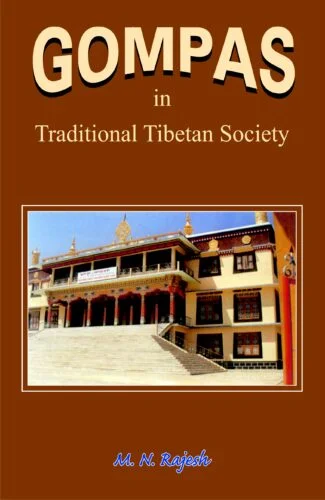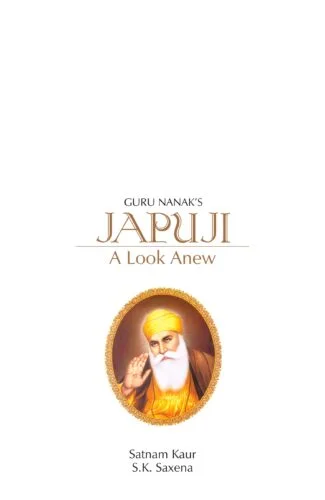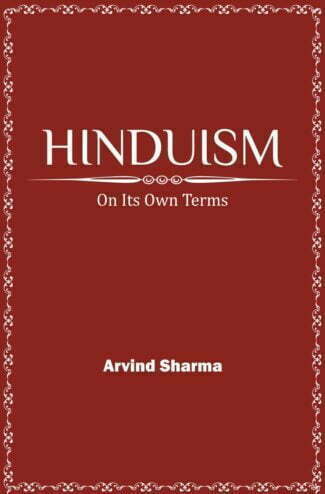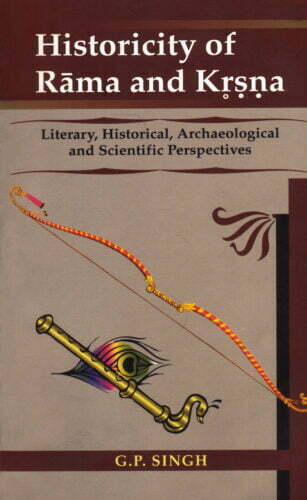Showing 73–84 of 250 results

The study, beautifully illustrated, focuses on the masks of gods, goddesses and demons worn by the Newars of Kath-mandu Valley. It deals with contexts in which the dancers wear the masks and with legends concerning the dances.
The presence of masks as both ritual and art objects is attested among the traditions of mankinds oldest civilisations. Cutting across cultural and geographical barriers, they have exhibited a remarkable range and diversity of meanings throughout history. The present study focuses on the masks worn in the Kathmandu Valley by the main ethnic group, the Newars. A specific aspect of the Newars is that, despite the political dominance of Hinduism, Buddhism is still alive. The masks represent gods, goddesses and demons, but never the dead or the ancestors. The author argues that the reason for the absence of figurations of the dead or ancestors is to be explained by the funerary rituals. There are no memorial monuments or other objects which perpetuate the memory of the deceased: It is through rituals performed after their death that the memory is preserved. The distinction is made between statue-masks and the masks worn during ritual dances. The author focuses on the contexts in which the masks are worn by professional dancers and draws attention to the legends which explain the origin of the dances and their ritual role. Detailed descriptions are given of the dances performed during different festivals in the localities of the Kathmandu Valley. The masks then worn are destroyed and re-made ritually each year by painters. Anne Vergati explains the relation between the dancer as a social person with a social identity and the mask which represents a god or a goddess. The mask is not supposed to hide the face of the dancer but to transform his identity in such a way as to make of him a deity. Supported by numerous illustrations in colour, the book will appeal to historians and connoisseurs of art as well as to scholars of the cultures of the Himalayan regions.

The book explores the ancient Indian art from the perspective of gender and delves into the development of engendered representation in art, with the emergence of aesthetic and sexual archetypes and stereotypes of women: goddesses, mothers, wives, nuns, semi-divine yakshis, ogresses and others by giving insights into the intention, agency and patronage patterns in early Indian art.
The book is an exploration of ancient Indian art from the perspective of gender. It focuses on the period from 181 bce to ce 320 a period of great turmoil in the politico-economic, socio-cultural and religious spheres that gave rise to contesting ideologies and gender complexities in ancient India. It delves into the development of engendered representation in art, with the emergence of aesthetic and sexual archetypes and stereotypes of women: goddesses, mothers, wives, nuns, semi-divine yaksis, ogresses and others. It examines the nature of the stereotypes and archetypes that were constructed on the basis of gender roles rather than on sex and how these were reflected by various attributes of the representations nudity or its absence, ornamentation, gestures, direction of gaze and context. It gives interesting insights into the intention, agency and patronage patterns in early Indian art.
The volume with its scholarly approach, providing fresh insights into early Indian art, will prove useful to scholars, students and researchers of Indian art and history alongwith the cognoscenti.

The book examines the gompas of Tibet for their organizational aspects and their role in continuing Buddhism in Tibetan history by performing multifarious functions and institutionalizing the theory of Buddhism so that it could transcend time and space. Consulting rare manuscripts, it also scrutinizes contribution of gompas to study of astronomy, astrology, medicine, and art and architecture.
The importance of the gompa or the Buddhist monastery in Tibetan history cannot be overemphasized: it was the institution that enabled continuity of Buddhism in Tibetan history by performing multifarious functions and institutionalizing the theory of Buddhism so that it could transcend time and space. Here, a scholar in religious studies, Dr. M.N. Rajesh examines the gompas of Tibet from a holistic perspective, focusing largely on its organizational and functional aspects. The book begins with a survey of the gompas Indian origins, viewing the mahaviharas as a prototype of the gompas, and studies contextualization of the gompas in Tibet wherein is described its relation with the superstructure the society. Consulting many old works and some rare manuscripts, the work analyzes the working of the monasteries their hierarchy, rules and rituals, role of the lamas, office of the abbot and other positions of authority, and recruitment and initiation of novices. It also elaborates the contributions of the gompas at different levels socio-economic and political which helped pre-modern Tibet to acheive a high degree of development over the centuries. It takes up for detailed scrutiny services rendered by the gompas in the field of Indic Studies astronomy, astrology and medicine, and in education and art & architecture. The book, with an elaborate index and a glossary of Indic terms, will be valuable reference work for scholars and researchers, in Buddhist studies and those interested in Tibetan history.

Japuji, Guru Nanak’s seminal work, also a daily prayer book, is the quintessence of his teaching. This book also attempts to explain the order of Guru’s prolific utterances, be they invocatory or just eulogistic. It has the Mul Mantra well interpreted. It also has the entire text of Japuji in Punjabi and Devnagari with Roman transliteration.
The ultimate reality, God or Brahman, may well be said to outstrip the reach of thought; but if we do not try, as thoughtfully as we possibly can, to get at what Guru Nanak really says in this seminal work Japuji a daily prayer book Þ how will we be able to benefit from his teaching, as he surely wanted fervently? In the entire history of mankind very few men have been so acutely sensitive to our multifarious suffering, and so keen to show us the way to transcend it for good, as Guru Nanak was. This makes the authors approach this holy work in a new perspective.
This volume tries to interpret Mul Mantra in such a way that the celestial attributes listed in it come to be interrelated, as they must be taken to be. It also attempts wherever possible to explain the order of Guru’s prolific utterances, be they invocatory or just eulogistic. However ebullient the Guru’s utterances may seem to be, they are always significant vehicles of some profound meaning; and also warranted by the running context.
Guru Nanak’s Japuji is a great work, yet this volume is expected to do some good to every thoughtful reader. At the end, the entire text of Japuji in Punjabi, Devnagari with Roman transliteration is given, making the text accessible to the masses who live outside India and need this prayer to be read in English.

Japuji, Guru Nanak’s seminal work, also a daily prayer book, is the quintessence of his teaching. This book also attempts to explain the order of Guru’s prolific utterances, be they invocatory or just eulogistic. It has the Mul Mantra well interpreted. It also has the entire text of Japuji in Punjabi and Devnagari with Roman transliteration.
The ultimate reality, God or Brahman, may well be said to outstrip the reach of thought; but if we do not try, as thoughtfully as we possibly can, to get at what Guru Nanak really says in this seminal work Japuji a daily prayer book Þ how will we be able to benefit from his teaching, as he surely wanted fervently? In the entire history of mankind very few men have been so acutely sensitive to our multifarious suffering, and so keen to show us the way to transcend it for good, as Guru Nanak was. This makes the authors approach this holy work in a new perspective.
This volume tries to interpret Mul Mantra in such a way that the celestial attributes listed in it come to be interrelated, as they must be taken to be. It also attempts wherever possible to explain the order of Guru’s prolific utterances, be they invocatory or just eulogistic. However ebullient the Guru’s utterances may seem to be, they are always significant vehicles of some profound meaning; and also warranted by the running context.
Guru Nanak’s Japuji is a great work, yet this volume is expected to do some good to every thoughtful reader. At the end, the entire text of Japuji in Punjabi, Devnagari with Roman transliteration is given, making the text accessible to the masses who live outside India and need this prayer to be read in English.

The book offers a systematic and complete account of the names and character of Hindu deities and their relationship with one another. Based on authoritative sources, it classifies the deities and explains their origin, function and worship supported by well-drawn illustrations.
Hindu mythology is a fascinating world of legends and stories centred around a sophisticated structure and hierarchy of deities and their worship. The many gods and goddesses, depicted in myriad forms in art and literature, constitute a sacred and complex subject of interesting study. The book, Hindu Mythology attempts to offer a systematic and complete account of the names and character of the deities of Hinduism and their relationship with one another. The book, typed afresh, studies the main attributes of the deities and recounts myths associated with their origin, nature, function and worship. For the purpose, the deities are classified into the major deities of the Vedic Age and those of the Puranic Age, and the inferior deities which include demigods, sacred plants, animals and birds, supernatural beings and minor deities like Sitala and Manasa. Based on authoritative sources, the reliable accounts are supported by well-drawn illustrations of the deities that add to the appeal of the work. The work involves clear explanation of terms and concepts in a fluent language. The volume will prove to be an interesting reference work for scholars and students of Hindu mythology and will attract general readers keen to acquire information on the subject.

This book traces the evolution of Hinduism from ancient period to the modern age. It records Dravidian and Aryan symbiosis in Hinduism, and the impact of Greeks and British, Buddhism and Islam. Quoting liberally from Hindu sacred texts and related literature, this book enumerates the ethical and socio-political implications of Advaita Vedanta, delving into the working of self-consciousness and the falsity of the world.
This book traces the evolution of Hinduism from ancient period to the modern age. It records Dravidian and Aryan symbiosis in Hinduism, and the impact of Greeks and British, Buddhism and Islam. Quoting liberally from Hindu sacred texts and related literature, this book enumerates the ethical and socio-political implications of Advaita Vedanta, delving into the working of self-consciousness and the falsity of the world. It emphasises the significance of the thoughts of Adi Shankara and others in this context. The book will be very useful for students and scholars of Hindu religion and philosophy as well as general readers.

This book traces the evolution of Hinduism from ancient period to the modern age. It records Dravidian and Aryan symbiosis in Hinduism, and the impact of Greeks and British, Buddhism and Islam. Quoting liberally from Hindu sacred texts and related literature, this book enumerates the ethical and socio-political implications of Advaita Vedanta, delving into the working of self-consciousness and the falsity of the world.
This book traces the evolution of Hinduism from ancient period to the modern age. It records Dravidian and Aryan symbiosis in Hinduism, and the impact of Greeks and British, Buddhism and Islam. Quoting liberally from Hindu sacred texts and related literature, this book enumerates the ethical and socio-political implications of Advaita Vedanta, delving into the working of self-consciousness and the falsity of the world. It emphasises the significance of the thoughts of Adi Shankara and others in this context. The book will be very useful for students and scholars of Hindu religion and philosophy as well as general readers.

The author focuses on some of the contemporary scientific ideas vis-a-vis the achievements of old-world Hinduism in cosmogony, astronomy, meteorology and psychology. The book, in the process, unfolds some fundamental Hindu philosophical concepts.
Hinduism is not just a religion. It synonymizes the five-millennia of Indias cultural heritage. Which is unequivocally manifest in the Hindus architecture, sculptural art, music, mythology, Sanskrit literary classics, social institutions, and ethical/legal codes. And also in their complex philosophical systems addressing perpetually baffling questions concerning creation, existence, cosmic consciousness, reincarnation, and the like. Yet, ironically perhaps, not many know about the striking breakthroughs of Hindu sages in astronomy, mathematics, chemistry, medicine, metallurgy, and other ancient-time sciences leave alone a deficient awareness of the monumental treatises of Charaka, Aryabhatta, Bhaskara and Kautilya that still remain as landmarks in the scientific history. Here is a book trying to highlight how Hinduism of yore : both in its motivations and methodology, laid the foundations of modern scientific quest. Drawing on the prodigious mass of Vedic/post-Vedic Sanskrit writings, the author focuses specially on some of the contemporary scientific ideas vis-a-vis the achievements of the old-world Hinduism in cosmogony, astronomy, meteorology and psychology. Contextually, Iyengars book also unfolds the Hindu worldviews of creation, soul and determinism, among other fundamental philosophical concepts. Discerning readers will find Hinduism and Scientific Quest as much a useful read as the scholars of traditional Indian philosophy and history of science.

The author focuses on some of the contemporary scientific ideas vis-a-vis the achievements of old-world Hinduism in cosmogony, astronomy, meteorology and psychology. The book, in the process, unfolds some fundamental Hindu philosophical concepts.
Hinduism is not just a religion. It synonymizes the five-millennia of Indias cultural heritage. Which is unequivocally manifest in the Hindus architecture, sculptural art, music, mythology, Sanskrit literary classics, social institutions, and ethical/legal codes. And also in their complex philosophical systems addressing perpetually baffling questions concerning creation, existence, cosmic consciousness, reincarnation, and the like. Yet, ironically perhaps, not many know about the striking breakthroughs of Hindu sages in astronomy, mathematics, chemistry, medicine, metallurgy, and other ancient-time sciences leave alone a deficient awareness of the monumental treatises of Charaka, Aryabhatta, Bhaskara and Kautilya that still remain as landmarks in the scientific history. Here is a book trying to highlight how Hinduism of yore : both in its motivations and methodology, laid the foundations of modern scientific quest. Drawing on the prodigious mass of Vedic/post-Vedic Sanskrit writings, the author focuses specially on some of the contemporary scientific ideas vis-a-vis the achievements of the old-world Hinduism in cosmogony, astronomy, meteorology and psychology. Contextually, Iyengars book also unfolds the Hindu worldviews of creation, soul and determinism, among other fundamental philosophical concepts. Discerning readers will find Hinduism and Scientific Quest as much a useful read as the scholars of traditional Indian philosophy and history of science.

This book defines and surveys Hinduism, and elaborates its keywords. It consists of two parts. The first part is a general survey of Hinduism. Many terms which appear in the first part are elaborated in the second part. This volume enables readers to grasp the fundamentals of Hinduism.
Hinduism, due to its proteanness, is more a way of life rather than a creed. The Hindu tradition recognizes the Vedas as its foundational scripture, Hinduism itself being indigenously known as Vaidika Dharma. Shruti and Smriti are the primary sources of Hinduism, where the former connotes the Vedas that stand for the revealed wisdom and the latter stands for tradition. Smriti texts include law books like the Manusmriti, epics (Itihasa) like the Ramayana and Mahabharata, Puranas, Agamas, Darshana literature (philosophical systems), sometimes Buddhist and Jaina works, other than the numerous religious works in regional languages.
Hinduism was challenged by the rise of heterodox movements in the sixth century bce, especially Jainism and Buddhism. Their prolonged encounter and interaction led to the development of the philosophical schools of Hinduism. The advent of Islam and Christianity, and the origin of Sikhism, led to further developments in the Hindu thought system.
This book defines and surveys Hinduism, and elaborates its keywords. It consists of two parts. The first part is a general survey of Hinduism. It describes its primary sources of information and the historical trends within its study; the Great Tradition with its basic teaching and practices; the Little Tradition; and modern developments. Many terms which appear in the first part are elaborated in the second part, along with some additional terms.
This volume enables readers to grasp the fundamentals of Hinduism.

This monograph is a research-based disquisition on the historicity of Rama and Krishna. Their historicity has been proved on the combined testimony of literature, history, archaeology and science. The work is largely based on original sources, deals with all relevant aspects of the subject and provides new insights into the history of India of the epic age.
This monograph is a research-based disquisition on the historicity of Rama and Krishna. Their historicity has been proved on the combined testimony of literature, history, archaeology and science. The work is largely based on original sources. It deals with all relevant aspects of the subject. It provides new insights into the history of India of the epic age. The author has brought to light many new facts relating to the subject. They will enlighten the inquisitive readers.The work is of immense value not only for the historians and archaeologists but also for those who are genuinely interested to know truth about the subject.
| There are no products |